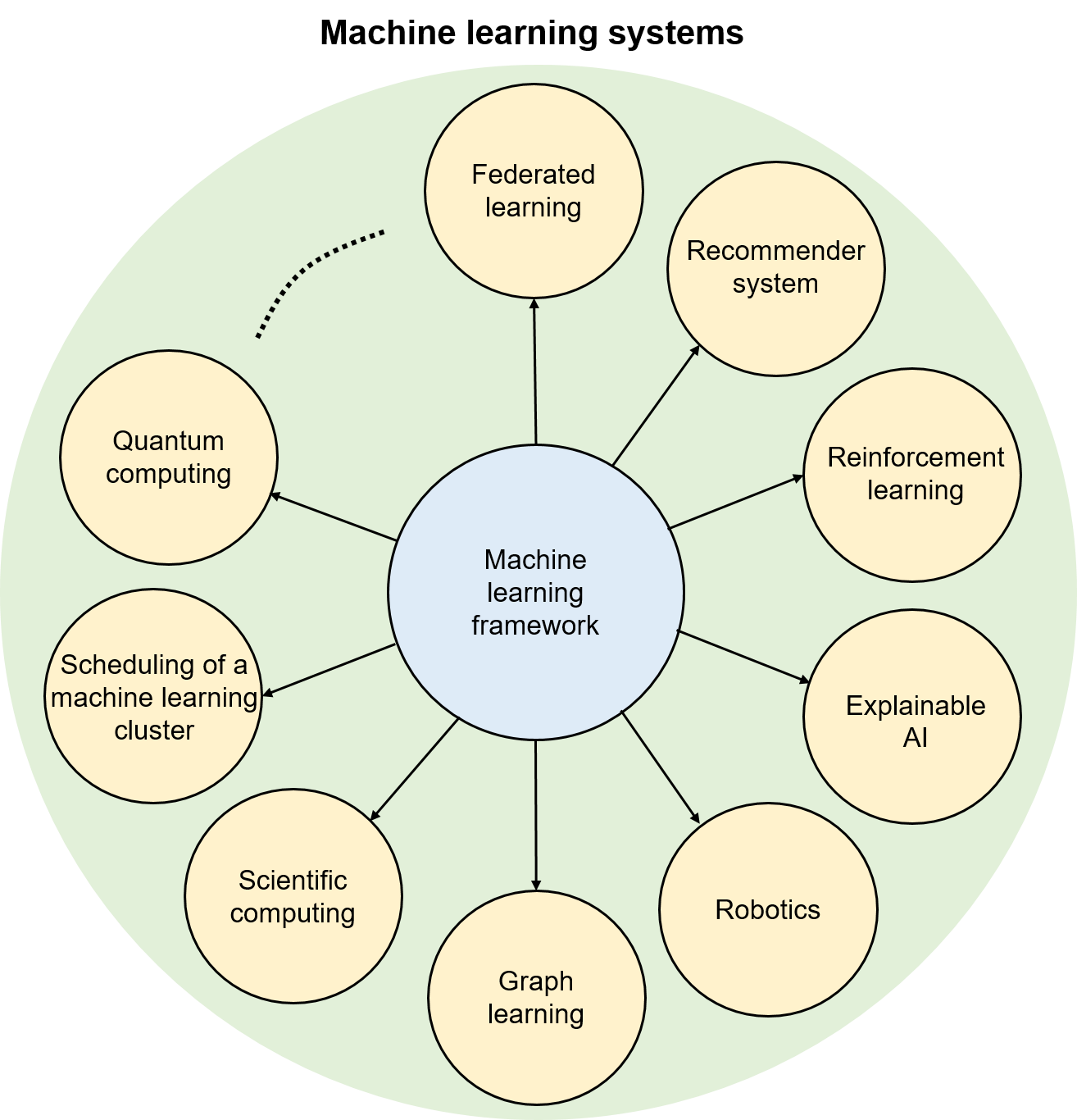2.4. Application Scenarios of Machine Learning Systems¶
A machine learning framework is commonly utilized in diverse scenarios, giving rise to a range of machine learning systems. In a broader context, a machine learning system refers to a collective term encompassing a variety of software and hardware systems that facilitate and execute machine learning applications. Figure Fig. 2.4.1 provides an overview of the various application scenarios for machine learning systems.

Fig. 2.4.1 Application scenarios of machine learningsystems¶
Federated learning: Laws and regulations on user privacy protection and data protection prevent many machine learning applications from accessing user data directly for model training purposes. This is where federated learning — based on a machine learning framework — benefits such applications.
Recommender system: Incorporating machine learning (especially deep learning) into recommender systems have achieved major success over the past few years. Compared with traditional rule-based recommender systems, those based on deep learning can analyze massive feature data of users more effectively, thereby bringing huge improvements to the accuracy and timeliness of recommendations.
Reinforcement learning: Because reinforcement learning is special in terms of the way it collects data and trains models, it is therefore necessary to develop dedicated reinforcement learning systems based on a machine learning framework.
Explainable AI: As machine learning becomes more and more popular in many key areas, including finance, healthcare, and governmental affairs, developing explainable AI systems based on a machine learning framework is gaining wider attention.
Robotics: Robotics is another area where the use of machine learning frameworks is gaining popularity. Compared with traditional robot vision methods, machine learning methods have achieved enormous success in several robot tasks, such as automatic feature extraction, target recognition, and path planning.
Graph learning: Graphs are the most widely used data structure and are used to express large volumes of Internet data, for instance, social network graphs and product relationship graphs. Machine learning algorithms have been proven effective for analyzing large-scale graph data. A machine learning system designed to process graph data is referred to as a graph learning system.
Scientific computing: Scientific computing covers a wide range of traditional fields (such as electromagnetic simulation, graphics, and weather forecast), in which many large-scale problems can be effectively solved by machine learning methods. Therefore, developing special machine learning systems for scientific computing is becoming an increasingly common practice.
Scheduling of a machine learning cluster: A machine learning cluster consists of heterogeneous processors, heterogeneous networks, and even heterogeneous storage devices. But in a machine learning cluster, computing tasks often have common characteristics during their execution (e.g., iterative execution based on the collective communication operator AllReduce). In order to take account of the cluster’s heterogeneity of devices and the common characteristics in task execution, a machine learning cluster is often designed to use a special scheduling method.
Quantum computing: Quantum computers are generally realized through a hybrid architecture, in which quantum computing is performed by quantum computers and the simulation of quantum computers is performed by classical computers. Many simulation systems (such as TensorFlow Quantum and MindQuantum) are realized on the basis of a machine learning framework because the simulation often requires massive matrix computations and gradient computation.
There are too many machine learning systems for this book to cover them all in depth. Instead, we aim to provide a system designer’s perspective on several core systems used in federated learning, recommenders, reinforcement learning, explainable AI, and robotics.
